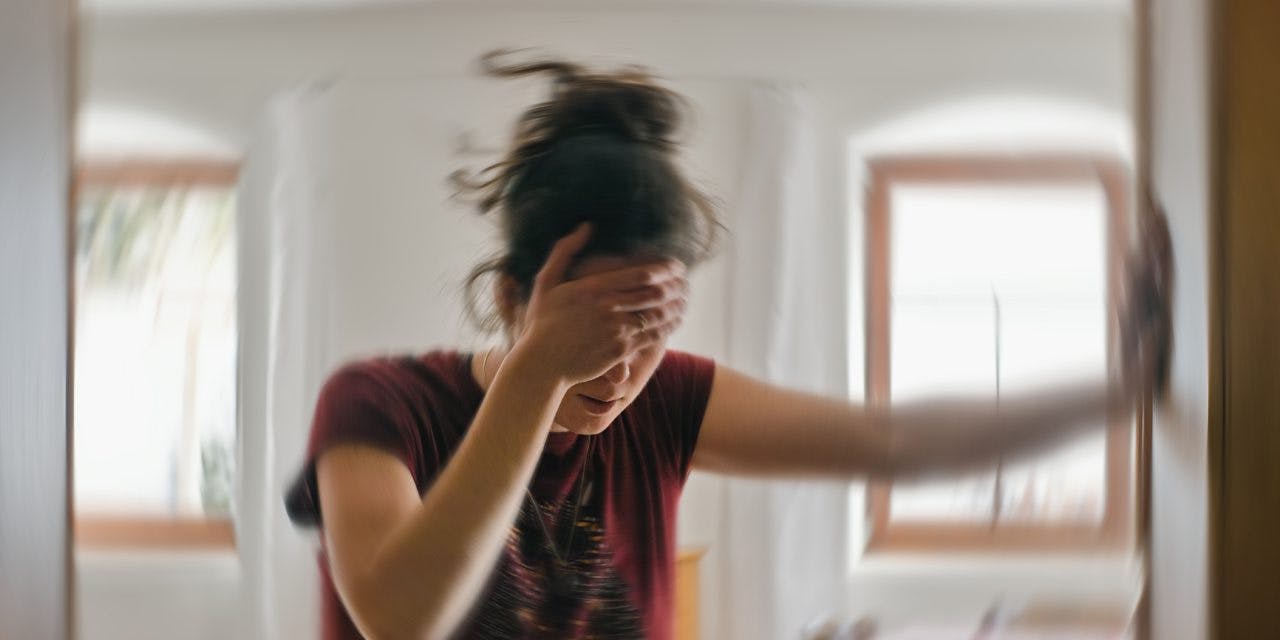Why Do Some People Faint When They Use Cannabis?

Article written by

Shanti RyleContent Writer
Most people can use cannabis without any issues outside of a dry mouth and red eyes. Still, fainting — more specifically, “vasovagal syncope” — is a surprising and unpleasant side effect that a small number of people may experience.
According to some researchers, these blackout periods occur due to THC lowering blood pressure in the body. The sudden drop in pressure surprises the body, and, in very rare cases, a person passes out.
While the experience is scarce, it’s good to know why people faint when using marijuana and how to mitigate or prevent the incident before it occurs. Here’s what the science says.
Get your medical marijuana card
Connect with a licensed physician online in minutes.
The Connection Between Marijuana and Fainting
Some people experience fainting spells when they use cannabis due to a type of fainting called vasovagal syncope. Other types include carotid syncope, which occurs when your carotid artery is constricted, and situational syncope, triggered by things like urinating and coughing.
A few factors explain why using marijuana may cause an individual to experience vasovagal syncope. One such aspect is the drop in blood pressure caused by consuming cannabis.
THC, one of the main cannabinoids in medical marijuana, is a vasodilator, meaning it expands blood vessels. This effect is one reason individuals with high blood pressure (hypertension) use medical marijuana, but for those with already low blood pressure, the drop can cause fainting. THC also increases overall heart rate, affecting the blood pressure drop and contributing to passing out.
Download Free Guide to THC
How Vasovagal Syncope Happens
Vasovagal syncope occurs when the components of the nervous system that regulate heart rate and blood pressure respond to a trigger stimulus, such as the sight of blood or something else emotionally distressing.
The heart rate suddenly slows, and the blood vessels in the legs dilate. As the blood flows straight down to your legs, it leaves the brain and briefly causes you to lose consciousness.
Most importantly, vasovagal syncope is harmless and doesn’t require treatment. Individuals may injure themselves during a fainting episode, such as hitting their head on a table when they pass out (which certainly is dangerous). A doctor may recommend tests to eliminate more serious causes of fainting, such as heart disease or another underlying medical condition.
Factors That Increase Risk of Fainting
Only a handful of studies have investigated marijuana use with fainting and dizziness. One of the main takeaways seems to be that weed-related fainting depends mainly on the person and their environment.
For example, a study conducted at Duke University found that six out of 10 participants felt “moderate” to “severe” dizziness when standing up after smoking a joint. However, their experience seemed to depend on their heart and blood pressure health factors. This indicates that if an individual already has variable blood pressure on the lower side, cannabis smoking may be more likely to make them feel dizzy.
Another study found similar results, with users reporting dizziness after standing up, showing a decreased pulse rate and blood pressure compared to those who reported fewer symptoms.
These findings aren’t surprising, as cannabis can considerably lower blood pressure, which causes users to faint if not enough blood gets to the brain. But several other biological mechanisms contribute to the fainting experience that cannabis may interact with that we’ve yet to understand without further research.
Finally, the consumption method may also impact the likelihood of someone fainting when smoking cannabis. When a person rapidly consumes THC, such as smoking or vaporizing cannabis, the cannabinoids’ speedy entry into the body also can shock the system. Other consumption methods like edibles and oils take longer to kick in and may therefore minimize the risk of fainting.
Download Our 1 Pager Guide to Dosing Medical Marijuana
Warning Signs
An individual may experience any of the following warning signs before fainting because of vasovagal syncope, including:
- Paleness
- Tunnel or blurred vision
- Nausea
- Lightheadedness
- Warmth
- A cold sweat
When someone is experiencing a vasovagal syncope episode, bystanders may observe:
- Dilated pupils
- Jerky movements
- A slow or weak pulse
People recover from a vasovagal syncope episode within less than a minute of the experience. However, it’s best to stay sitting down for the next 15 to 30 minutes, as standing up too soon after fainting can increase the risk of fainting a second time.
How to Prevent Fainting When Using Cannabis
Individuals using cannabis can sometimes, but not always, avoid a vasovagal syncope episode if they feel symptoms oncoming. If you feel like you’re about to faint, lie down and elevate your legs, allowing gravity to keep blood flowing towards the brain. If lying down isn’t possible, sit and place your head between your knees until you feel symptoms subside.
Before consuming cannabis, there are some things you can try to avoid passing out:
- Try a new strain: Switching to a lower-THC strain is one option, as the lower amount of THC (or that it’s tempered with higher CBD levels) will mitigate the strain’s ability to dilate your blood vessels and prevent blood pressure from dropping too low.
- Sit or lie down: Using medical marijuana while sitting or lying down also reduces your risk of fainting, keeping the distance your blood needs to travel to less than when you’re standing.
- Open a window: The presence of fresh air or a breeze can also help calm the nerves if you feel faint.
- Switch to edibles or oils: Edibles and oils take much longer to kick in than smoking or vaporizing, allowing your system to acclimate to THC levels in the body at a slower, less impactful rate.
And if you’re having regular fainting spells when using cannabis, consult your medical marijuana doctor to determine how best to adjust your treatment plan.
The Bottom Line
Medical marijuana’s benefits are desirable for many patients, but fainting is a side effect most people won’t tolerate. Luckily, one can take preventative and in-the-moment measures to prevent fainting spells with cannabis use, allowing them to continue enjoying the health benefits of marijuana without worrying about a fainting episode.
Apply for a medical marijuana card in your home state. Leafwell’s virtual clinic is open and here to serve you with valuable guidance as you move through the application process.
Get your medical marijuana card
Connect with a licensed physician online in minutes.



